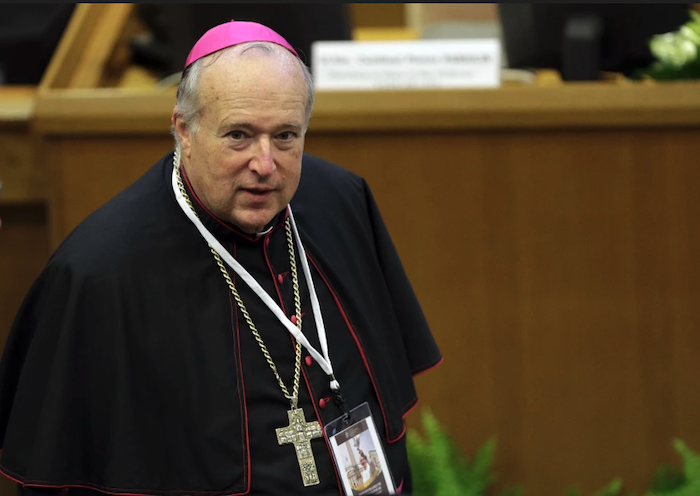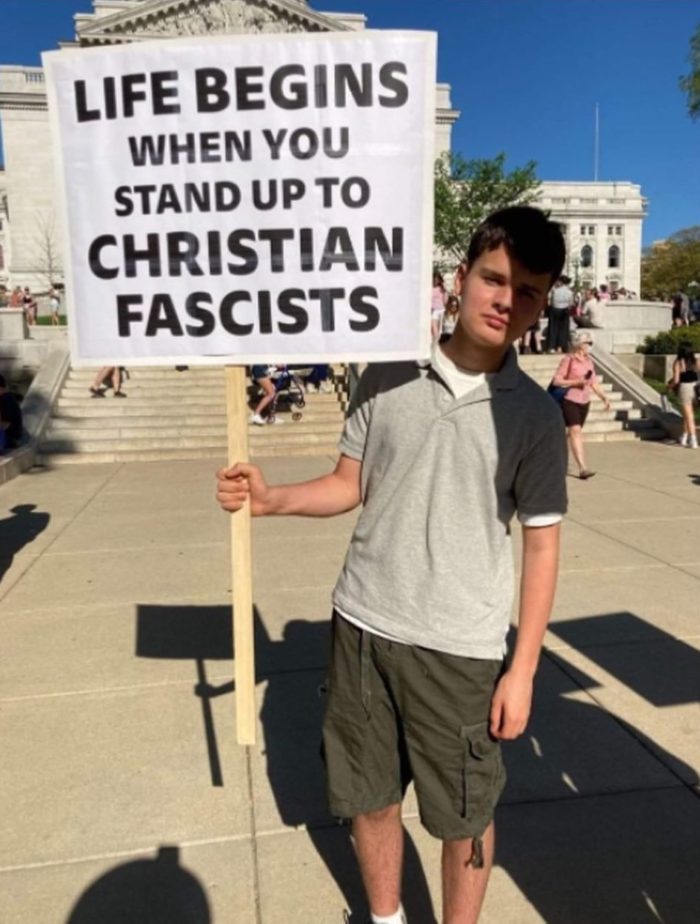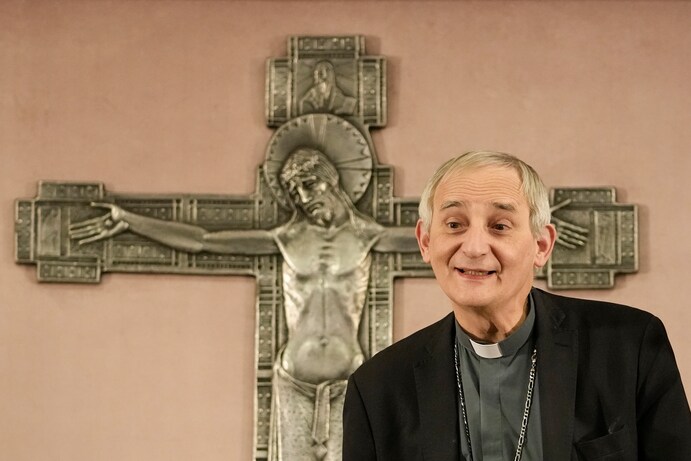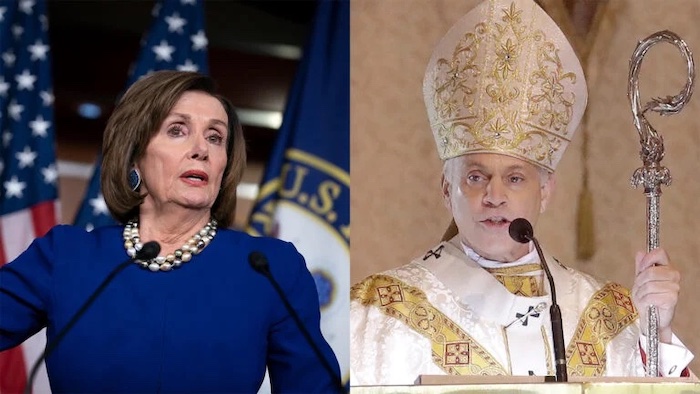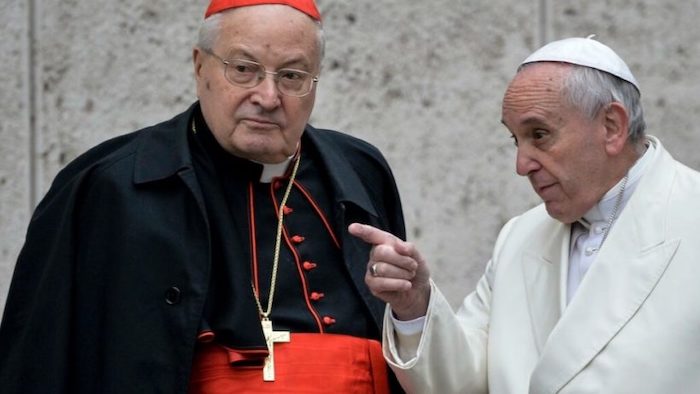
By
The main accusation against the Vatican in the pederasty scandal is that it has covered up for the guilty in recent decades. As more becomes known, Benedict XVI, then Prefect of the Doctrine of the Faith since 1981, comes out better as someone who tried to deal uncompromisingly with the allegations, as opposed to another, more powerful sector of the Curia that chose to cover them up. As Ratzinger bitterly put it in 1995 when he found himself held back from acting on the scandal of Vienna Cardinal Hermann Groer (whom the Vatican excommunicated for sexually assaulting young Benedictine novices), “the other side has won”. He confessed this to Cardinal Christopher Schönborn. But Schönborn added that “the other side” was led by Angelo Sodano, whom he accused of having blocked five years earlier the creation of a commission of inquiry into Groer’s sexual abuse. This was an unprecedented Vatican infighting to go public.
One of the most serious accusations against Sodano is that he was the protector of Mexico’s Marcial Maciel, founder of the Legionaries of Christ, an ultra-conservative order promoted by John Paul II, who is now considered by the Holy See to be “an unscrupulous criminal”. After the investigation ordered by Benedict XVI, it turned out that he was a paedophile, had two wives, three children, three different identities and managed funds worth millions. There were allegations against him in the Vatican, but thanks to Sodano they were bogged down.
The National Catholic Reporter, a prestigious American Catholic publication, has published a devastating investigation that denounces how Maciel bought his protection in Rome with donations to Sodano and other heavyweights of John Paul II’s old guard, such as his personal secretary, Stanislaus Dziwisz, who was archbishop of Krakow, and the Spaniard Eduardo Martinez Somalo. The magazine claims that Maciel paid Sodano US$10,000 for a talk and organised the 200-cover banquet for his appointment as cardinal in 1991. Maciel also hired Sodano’s nephew Andrea, an engineer, to build the order’s lavish university in Rome. Another reputable publication, America, of the American Jesuits, reacted thus: “There is a cardinal whose head must roll, Sodano”.
He started out in a diplomatic career and was nuncio in Chile during the Pinochet dictatorship. He had a friendly relationship with him and was one of the architects of John Paul II’s controversial visit to the country in 1987. It was during this visit that Karol Wojtyla was famously locked in, as he was shown a door behind a curtain and suddenly appeared on the balcony with the dictator, where photographers were waiting for him.
Nevertheless, something about Sodano’s opaque and sinuous character must have appealed to John Paul II, who appointed him Secretary of State in 1991. In 1999 Sodano still remembered his friend Pinochet and intervened in his defence on humanitarian grounds when he was arrested in London. “The Holy See is in the front line when it comes to defending human rights in any area,” he claimed when it became known.
In 1994, Sodano had another offender close to him, his own brother Alessandro, convicted of corruption in “Clean Hands”, and it was even more so in 2008 with his nephew Andrea, the engineer. He was a partner of Raffaello Follieri, an executive and playboy swindler who posed as a Vatican man in the United States. He was young, a millionaire, a friend of Bill Clinton and his girlfriend was the actress AnneHathaway, until he was arrested by the FBI and got four years in prison. They had a curious idea to make money: to buy up the real estate properties of US dioceses bankrupted by the pederasty scandal at a good price.
The clergy sex abuse scandal and its institutional cover-up in Chile probably all but closed the chapter on his long reign as the Vatican’s most influential. But it will not erase the immense, and not always positive, impact he has had on the church and its institutional shape to which he devoted his long and prodigious life as a career diplomat of the Holy See.
One incident in which his power and influence were particularly decisive dates back to 22 June 2006. On that day, Pope Benedict XVI announced that Sodano was retiring and handed the job of Secretary of State to Cardinal Tarcisio Bertone, a trusted aide from the Pope’s time as prefect of the Congregation for the Doctrine of the Faith. Although the transition would not take effect until three months later (15 September), it was on that day that Benedict XVI inflicted a mortal wound and slowness on his own pontificate by rejecting Cardinal Sodano.
The Italian had tried to dissuade him from choosing Bertone for the post that was de facto second only to the Pope in the Vatican hierarchy. In the weeks leading up to the retirement, Sodano had advised Benedict to select an experienced diplomat for the post, which was not Bertone, a mediocre canon lawyer and Salesian.
One of the names on the outgoing list of candidates proposed by the Secretary of State was Archbishop Giovanni Lajolo, the Vatican’s “Minister of Foreign Affairs” at the time.
Lajolo was one of Sodano’s trusted allies and came from the same region of Italy as him, Piedmont. But, more importantly, Lajolo had also been papal nuncio to Germany (1995-2003) and spoke the Pope’s native language, which his cardinal protector believed made him an attractive choice for Benedict to accept.
But the now Pope Emeritus rejected Sodano’s advice and insisted on appointing Bertone. In doing so, he lost the vital support of the majority of Vatican diplomats in the Roman Curia, led by Angelo Sodano, who astutely fed the narrative that the pope had marginalised them by choosing the undiplomatic Bertone. From that moment on, Ratzinger’s pontificate went from one major crisis to another, both within the Vatican and on the world stage. After nearly eight agonising years he and his small circle of trusted aides were largely isolated. Faced with all this, the venerable theologian Pope resigned.
Sodano and his allies survived, however, and at the 2013 conclave, as dean of the College of Cardinals, his duties included presiding at mass and moderating the pre-conclave discussions. It is known for certain that once the vote was underway, he had persuaded other cardinals to cast their votes for Jorge Mario Bergoglio SJ, the man who is now Pope Francis.
It is unclear whether Sodano delivered the decisive votes for the election of the Argentine pope, but those counts were essential. And Francis was and remains aware of that.
He began his pontificate in full knowledge that Sodano still had considerable reach and influence over much of what was happening in ecclesiastical Rome. He also had personal experience of the former Secretary of State’s fervent willingness to decide and promote, especially in Latin America, at least since the 1970s, political decisions and appointments of bishops.
During the 1992 CELAM (Latin American Episcopal Conferences) meeting in Santo Domingo, Bergoglio, as a newly ordained auxiliary bishop, witnessed how Cardinal Sodano – together with one of his Chilean protégés, the future Cardinal Jorge Medina Estévez – went over the bishops’ heads and, although not entirely successfully, tried to dictate the content of the meeting’s final document.
Besides his native Italy, Latin America is probably the part of the world that Angelo Sodano loved most. During his more than 50 years of service to the Holy See, his only diplomatic postings abroad were there. His first assignments as a priest were in Ecuador (1961-1963), Uruguay (1963-1965) and Chile (1965-1967). After another ten years in Rome in the Secretariat of State, he returned to Chile in early 1978, newly ordained to the episcopate and ready to serve a full decade as apostolic nuncio.
Sodano, more than any other Vatican official, played a decisive role in the formation of Chile’s episcopal leadership. From the rise of the late Cardinal Jorge Medina to that of Bishop Juan Barros, linked to the Karadima case, Sodano’s fingerprints are everywhere.
When he became Secretary of State, Sodano was able to continue to exert his influence over the appointment of bishops in Chile (and elsewhere) as a member of the Congregation of Bishops, a post he held until 2007.
It is highly likely that Sodano intervened in the Barros case and advised Pope Francis not to listen to recurring accusations that the bishop turned a blind eye to the sexual abuse of children by his mentor, Fernando Karadima.
Who knows how many more times he used his power and position to stop investigations into crimes committed by his ecclesiastical colleagues out of concern for “the good of the church”?
Finally, and boasting of Sodano’s extensive and dark tentacles, Henry Kissinger himself called him the world’s most cunning politician-diplomat. Too bad he used that cunning to do evil. It will be difficult for his soul to rest in peace.
Complete Article ↪HERE↩!

